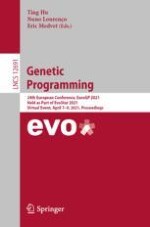This book constitutes the refereed proceedings of the 24th European Conference on Genetic Programming, EuroGP 2021, held as part of Evo*2021, as Virtual Event, in April 2021, co-located with the Evo*2021 events, EvoCOP, EvoMUSART, and EvoApplications. The 11 revised full papers and 6 short papers presented in this book were carefully reviewed and selected from 27 submissions. The wide range of topics in this volume reflects the current state of research in the field. The collection of papers cover interesting topics including developing new operators for variants of GP algorithms, as well as exploring GP applications to the optimisation of machine learning methods and the evolution of complex combinational logic circuits.
